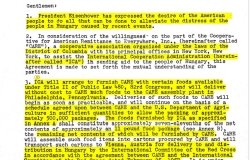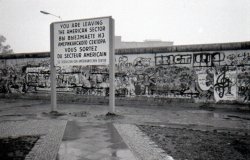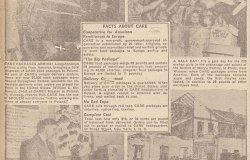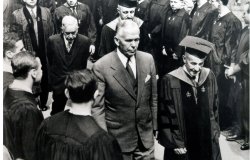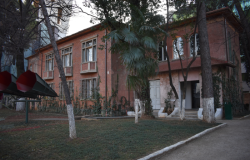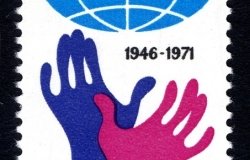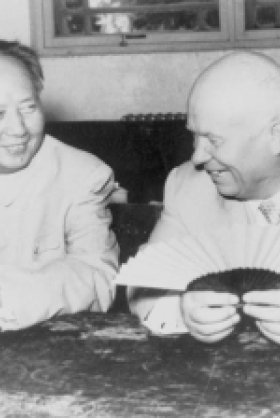Secret Empire: Eisenhower, the CIA, and the Hidden Story of America’s Space Espionage
A Director's Forum with Philip Taubman, Deputy Editorial Page Editor, The New York Times and two-time Polk award-winner
Overview
Philip Taubman, deputy editorial page editor for The New York Times and two-time Polk award-winner introduced his new book Secret Empire: Eisenhower, the CIA, and the Hidden Story of America’s Space Espionage to an audience that included several Eisenhower administration intelligence staff.
Taubman’s book, being released on the 50th anniversary of the Eisenhower administration, exposes the birth of high-tech espionage and new technologies---the U2 spy plane, the Corona spy satellite---which revolutionized espionage and intelligence gathering. His account was drawn from previously classified documents, oral history archives and scores of interviews with the scientists, CIA officials, and other administration staff who were part of the effort. Taubman credits the success of the program to President Eisenhower’s leadership and willingness to work with outside scientists to develop innovative technologies.
When Eisenhower came into office, “There was an extraordinary absence of knowledge. They were sorely pressed to know what the enemy was about,” said Taubman. In his book, Taubman describes the frustration felt by officials who had discovered the threat on some level but had no idea just how severe it was. Eisenhower wanted to understand the threat to avoid becoming what he feared was a garrison state—a huge military-industrial complex that would deform society and cripple the state. Eisenhower’s intimate knowledge of the military, enabled him to recognize that the Pentagon was a large bureaucracy and was not suited for the unconventional thinking and innovation he knew was required for reconnaissance.
Taubman explains that spy technology profoundly affected the Cold War—relations between the U.S. and the U.S.S.R would have differed drastically had U2 spy plans not discovered that the missile gap had been exaggerated by Krushchev. The intelligence community’s realization—and subsequent downgrade within U.S. National Intelligence Estimates—of the true numbers of Soviet ICBMs allowed talks and arms control negotiations to go forward (even if relations suffered from the downing of Gary Powers’ U2 in 1960). By “national technical means” the U.S. government was able to assess Soviet power more accurately, and thus slow further increases in missile production, saving the U.S. government potentially hundreds of billions of dollars. According to Taubman such innovations “stabilized the Cold War and kept it from turning hot.”
Taubman attributed the success of the espionage system to three qualities of Eisenhower’s leadership:
1. Heavy reliance on the outside advice of scientists.
2. The “audacity” to task the CIA with programs traditionally handled by the Air Force. The example Taubman provides here is the development of the U2 spy plane.
3. Extraordinary patience. The Corona spy satellite system took 18 months to build and 12 failed attempts before it worked. Taubman pointed out that in today’s world, if a newly tested system failed 2 or 3 times it would be canned.
Another key to the success of the espionage system according to Taubman was the collaboration among the scientific community, the private sector, the military, and the government. Unfortunately, this practice of actively collaborating with outside scientists in the private sector did not continue under subsequent administrations. Taubman noted that the Vietnam War alienated academia from policymakers, and Nixon specifically diminished the role scientists played in his administration. The “magic of the Eisenhower administration” came to an end. This reluctance to involve scientists on matters of national security may be changing however in light of the threat from terrorism. After 9-11, CIA Director George Tenet invited scientists in to brainstorm about possible new technologies to combat terrorism and to re-ignite the collaborative spirit of the Eisenhower years.
Hosted By

Cold War International History Project
The Cold War International History Project supports the full and prompt release of historical materials by governments on all sides of the Cold War. Through an award winning Digital Archive, the Project allows scholars, journalists, students, and the interested public to reassess the Cold War and its many contemporary legacies. It is part of the Wilson Center's History and Public Policy Program. Read more
Thank you for your interest in this event. Please send any feedback or questions to our Events staff.
